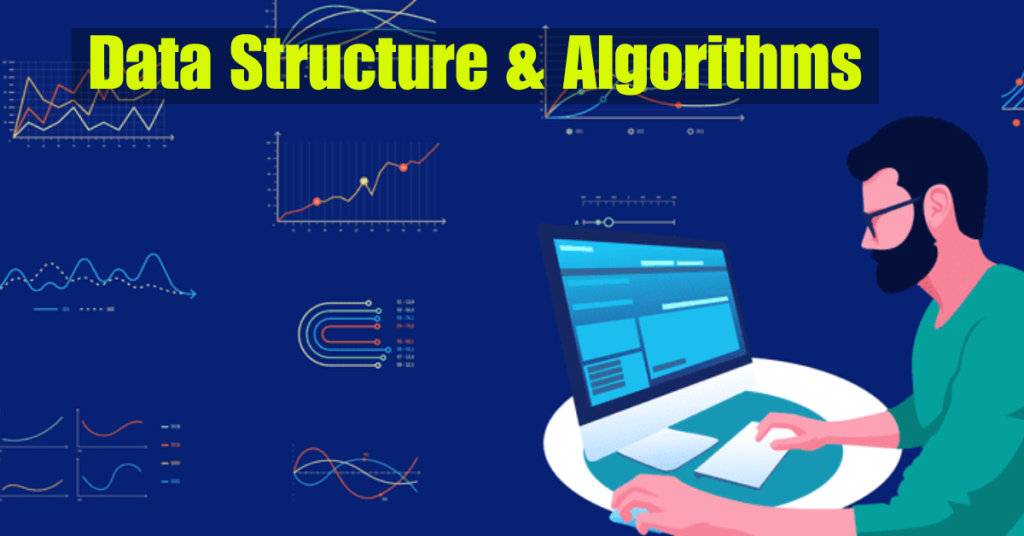Most Important DSA Topics to Crack Coding Interviews in 2025 are no longer optional—they’re essential. If you’re aiming for a job at top tech companies or product-based firms, your success largely depends on how well you understand and apply core Data Structures and Algorithms (DSA).
From Arrays and Trees to Dynamic Programming and Graphs, these topics form the backbone of most coding interviews. But with limited time and endless resources, it’s easy to get overwhelmed.
In this blog, we’ll guide you through the high-yield DSA topics that matter most in 2025—so you can focus smart, practice right, and crack that dream interview.
What Are Data Structures & Algorithms (DSA) and Why Are They Important?
Data Structures and Algorithms (DSA) form the foundation of programming, providing the tools to manage data efficiently and solve complex problems. Data structures help in organizing and storing data, while algorithms define the steps to manipulate that data. Together, they form the core of all programming tasks, from web development to machine learning and artificial intelligence.
Understanding DSA is vital for:
- Interview preparation: Most tech companies, including Google and Amazon, test DSA knowledge in coding interviews.
- Optimizing performance: It allows you to write faster, more memory-efficient code.
- Problem-solving: Helps you approach complex programming challenges logically.

What Are the Top 5 Key Topics in DSA Every Programmer Should Learn?
Here are the top 5 essential DSA topics that will provide you with a solid foundation and help you solve most programming problems:
Arrays & Strings: The Building Blocks of Programming
Arrays and strings are the most basic and essential data structures in programming. They are the building blocks for more complex structures and algorithms.
- Arrays: A collection of elements stored in contiguous memory locations. Arrays are simple to implement and efficient for accessing data by index.
- Strings: Sequences of characters stored as arrays of characters. In many programming languages, strings are treated as arrays with additional methods to manipulate data.
Common Operations:
- Insertion and deletion
- Searching and sorting
- Traversing and updating elements
Linked Lists: Efficient Data Handling
A Linked List is a linear data structure where elements (nodes) are connected through pointers. Unlike arrays, linked lists allow dynamic memory allocation and efficient insertion or deletion operations.
- Singly Linked List: Each node points to the next node.
- Doubly Linked List: Each node contains two references (one to the next node and one to the previous node).
- Circular Linked List: The last node points back to the first node.
Why Learn Linked Lists?
- Dynamic size: They are more flexible than arrays since the size can grow or shrink at runtime.
- Efficient insertions/deletions: Insertions and deletions can be done in constant time, especially in doubly or circular linked lists.

Stacks and Queues: Essential for Order Management
Stacks and queues are abstract data types that deal with the order of processing elements. Both are critical for handling data in a controlled manner, making them useful in applications like expression evaluation, parsing, and task scheduling.
- Stack (LIFO): The last element added is the first one to be removed.
- Queue (FIFO): The first element added is the first one to be removed.
Use Cases:
- Stack: Used in function calls, depth-first search (DFS), and undo mechanisms.
- Queue: Useful in breadth-first search (BFS), task scheduling, and handling requests in networking.
Trees and Graphs: Complex Data Relationships
Trees and graphs are non-linear data structures that represent hierarchical and interconnected data. They are fundamental in modeling real-world systems such as organizational structures, networks, and AI algorithms.
- Trees: A tree is a hierarchical structure with a root node and child nodes.
- Binary Tree: Each node has at most two children.
- Binary Search Tree (BST): A tree where the left child is smaller than the parent, and the right child is greater.
- Graphs: Graphs are used to represent relationships where nodes (vertices) are connected by edges. Graphs can be directed or undirected.
Applications:
- Trees: Used in hierarchical data representation (e.g., file systems).
- Graphs: Employed in social networks, routing algorithms, and web crawling.
Sorting and Searching Algorithms: Optimizing Data Processing
Sorting and searching are critical in processing large datasets. Efficient algorithms for these operations ensure that we can manage and retrieve data quickly and accurately.
- Sorting Algorithms:
- Merge Sort: A divide-and-conquer algorithm with O(n log n) time complexity.
- Quick Sort: Another divide-and-conquer algorithm, faster in practice than Merge Sort in many cases.
- Bubble Sort: Simple but inefficient, with O(n²) time complexity.
- Searching Algorithms:
- Linear Search: Sequentially checks each element.
- Binary Search: Efficiently finds an element in a sorted array with O(log n) time complexity.
Why Learn Sorting & Searching?
Efficiency: Sorting ensures data is organized for efficient processing and retrieval.
Optimizes data retrieval: Searching algorithms help in finding data faster.
How Do Data Structures & Algorithms Impact Software Development?
Data Structures and Algorithms are integral to building efficient, scalable software. Here’s how they impact software development:
- Performance Optimization: They help reduce the time complexity of algorithms, making software faster and more efficient.
- Scalability: With the increasing volume of data in modern applications, DSA ensures that systems scale efficiently, handling more data with minimal performance degradation.
- Problem Solving: DSA equips developers with problem-solving techniques to tackle complex challenges in domains like databases, networking, and machine learning.
As technology advances, understanding DSA will become increasingly important to manage the growing complexity of applications and systems.
What Are the Best Resources to Learn DSA?
To learn Data Structures and Algorithms, there are numerous online platforms, books, and courses available:
Online Platforms:
- LeetCode: Offers a comprehensive collection of DSA problems with varying difficulty.
- GeeksforGeeks: Features tutorials, articles, and coding challenges on DSA.
- HackerRank: Provides a platform for learning and practicing DSA through interactive challenges.
Books:
- Cracking the Coding Interview by Gayle Laakmann McDowell
- Introduction to Algorithms by Cormen, Leiserson, Rivest, and Stein
Courses:
- Coursera: Offers DSA courses from Stanford and Princeton.
- Udemy: Features numerous DSA tutorials, including interactive coding challenges.
Conclusion: Most Important DSA Topics
Preparing with the most important DSA topics is essential if you want to crack coding interviews, ace technical exams, or succeed in placements. Whether you’re following a DSA roadmap, practicing from DSA coding questions and answers, or searching threads on Reddit about the most important DSA topics for placement, one thing is clear: focus and consistency matter.
The most important DSA topics for interviews include arrays, strings, linked lists, trees, graphs, dynamic programming, and greedy algorithms. These are not only key to interviews but are also among the data structures important topics for exams and competitive programming.
If you’re just starting, stick to a structured plan—follow a DSA roadmap, solve common problems, and revise frequently. Mastering the most important data structures and algorithms will give you the confidence and skills needed to stand out in 2025 tech placements.
FAQ Section:
1. Why are Data Structures & Algorithms important for coding interviews?
Data structures and algorithms help solve complex problems efficiently. Many coding interviews focus on testing your ability to choose the right data structure and algorithm for a problem, making DSA knowledge crucial for success.
2. How do Data Structures improve software performance?
Data structures optimize how data is stored, accessed, and manipulated, leading to faster processing times, reduced memory usage, and more efficient systems. This is particularly important in large-scale applications.
3. What is the difference between arrays and linked lists?
An array is a collection of elements stored in contiguous memory locations, while a linked list consists of nodes that are not stored sequentially. Linked lists allow dynamic memory allocation and are more flexible for insertions and deletions.
4. What are Stacks and Queues used for?
Stacks (LIFO) and queues (FIFO) are abstract data types that manage the order in which data is processed. They are used in applications like function calls (stack) and task scheduling (queue).
5. How do Trees and Graphs differ in data representation?
Trees represent hierarchical structures with a root node and children, whereas graphs represent more general relationships, often with nodes that are connected in multiple ways (directed or undirected).
6. Why should I learn Sorting and Searching Algorithms?
Sorting and searching algorithms are essential for efficiently organizing and retrieving data. Understanding these algorithms helps you solve common programming problems related to data management and optimization.
7. Where can I learn Data Structures & Algorithms?
You can learn DSA through online platforms like LeetCode, GeeksforGeeks, Udemy, and Coursera. Books like Cracking the Coding Interview and Introduction to Algorithms also offer in-depth insights.

2 thoughts on “Top 5 Key Topics in Data Structures & Algorithms (DSA) Every Programmer Must Know”